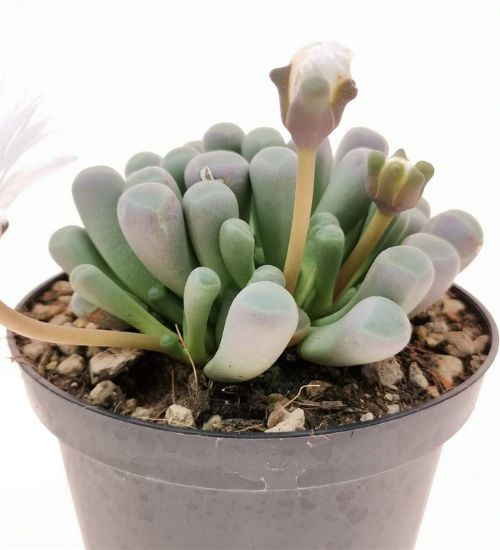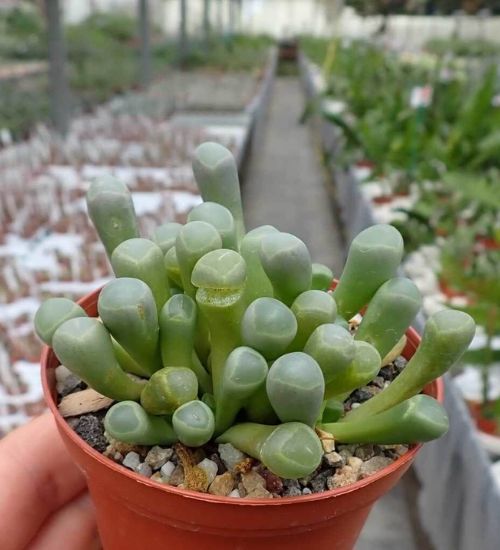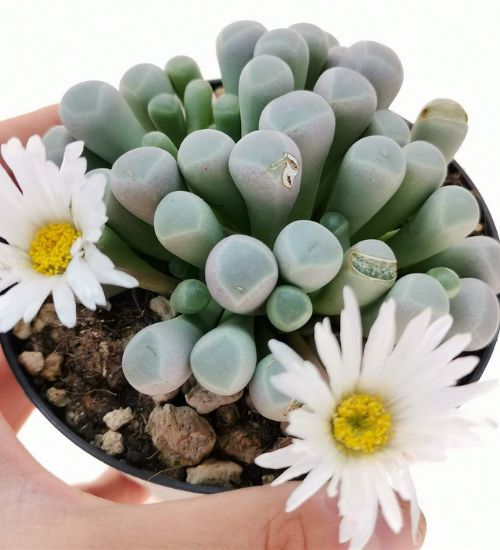Sun: Full sun to light shade
Water: Typical water needs for a succulent
Temperature: Zone 9a from 20° F to 25° F (-6.7 ° C to -3.9° C) to Zone 11b from 45° F to 50° F (7.2° C to 10° C)
Winter Survival: Cold hardy to 0°C
Propagation: cuttings, seeds
Flower: in late winter or early spring
Flower Type: white or cream
Toxic: Can be toxic to humans and animals
Dormant: summer
Space Requirement: Indoors & Outdoors
Common Problems: Plants may rot if overwatered
Where to buy Fenestraria Aurantiaca?
Basc Care for Fenestraria Aurantiaca
Watering
What you need to remember is that this type of succulents needs to be watered for every 2 weeks
Can you water your succulent more than what its need? The answer is yes and no. In extreme conditions, you can water your plants more often when you notice the soil is completely dry.
Fertilizing
Only feed this succulent during its active growing seasons which means winter. Use the right fertilizer applied in the right amounts. Applying half-strength balanced fertilizer every month or so is recommended for optimal results.
Do not fertilize during summer as the plant is dormant.
Sun & Location Requirements for "Baby Toes, Baby's Toes, Window Plant"
Placing "Baby Toes, Baby's Toes, Window Plant" in full sun to light shade is key for its growth and health. Look for a spot that gets around 6 hours of direct sunlight each day, but also offers plenty of shade during the hottest parts of the day.
As per this succulent profile, it is only able to stay healthy when the environment temperature is above the range of zone 9a from 20° F to 25° F (-6.7 ° C to -3.9° C).
Fenestraria Aurantiaca is a cold-hardy variety that can survive temperatures as low as 0°F. It has adapted to its environment by developing thick, succulent leaves and stems that are able to retain moisture in winter months. Its fleshy leaves also help protect the plant from extreme cold temperatures, allowing it to survive even the harshest cold conditions.
Any succulents in the group will need a medium space to grow. You can place your pot at your table or window. Since this plant needs more space than mini succulents, you should consider do not plant them together with other succulents/plants.
Fenestraria Aurantiaca also benefits from some indirect light throughout the day as well, so make sure you give it enough space to soak up light without becoming too exposed to heat.
Propagation
One way to propagate Fenestraria Aurantiaca is by cutting
Growing Fenestraria Aurantiaca from seeds is an easy and economical way to produce more plants. Identify a healthy seed by its plumpness, dark color and slightly sticky texture. Once the potting mix has been pre-mixed with well-draining soil, sow the seeds evenly and press lightly into the surface. To ensure germination, keep the container in bright but indirect light and mist the soil gently with a spray bottle.
Toxicity

Fenestraria Aurantiaca has high levels of calcium oxalate, a substance that is toxic to both humans and animals. Ingesting parts of this succulent can cause skin irritation, difficulty breathing, blurred vision and vomiting in severe cases. Keep children and pets away from ""Baby Toes, Baby's Toes, Window Plant"" and regularly inspect for signs of damage or consumption.


